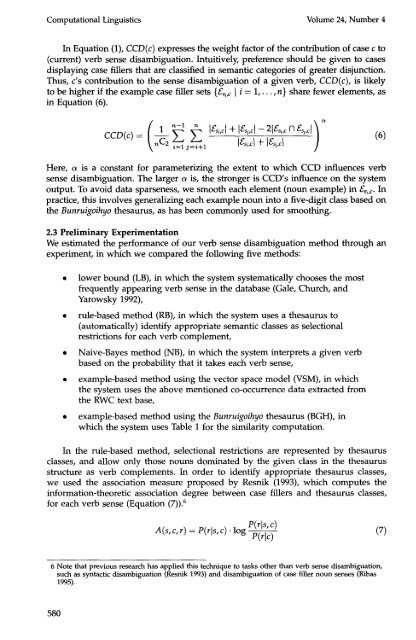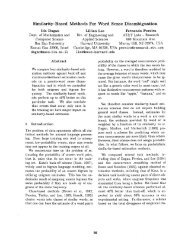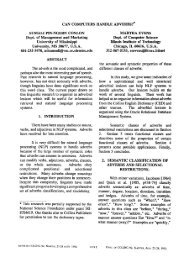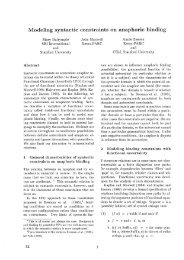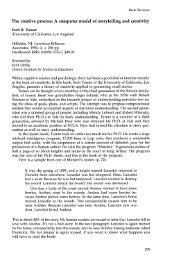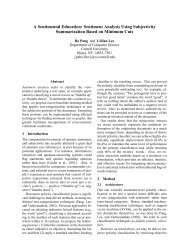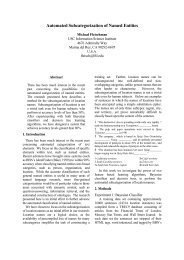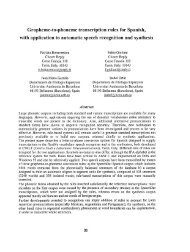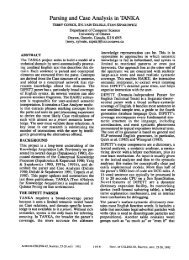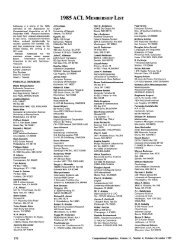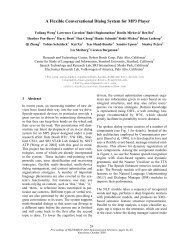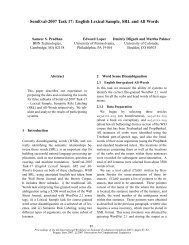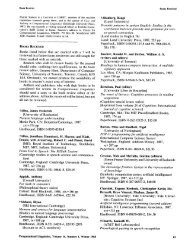Selective Sampling for Example-based Word Sense Disambiguation
Selective Sampling for Example-based Word Sense Disambiguation
Selective Sampling for Example-based Word Sense Disambiguation
Create successful ePaper yourself
Turn your PDF publications into a flip-book with our unique Google optimized e-Paper software.
Computational Linguistics Volume 24, Number 4<br />
In Equation (1), CCD(c) expresses the weight factor of the contribution of case c to<br />
(current) verb sense disambiguation. Intuitively, preference should be given to cases<br />
displaying case fillers that are classified in semantic categories of greater disjunction.<br />
Thus, c's contribution to the sense disambiguation of a given verb, CCD(c), is likely<br />
to be higher if the example case filler sets {gsi,c I i = 1,..., n} share fewer elements, as<br />
in Equation (6).<br />
C' 1 r~-I __ ~<br />
CCD(c) = ~,7~ ~ ~ Igs''¢l + ]£s,,cl 2[£s~,c r"l £s,,~l<br />
j=i+l I&,,I 7 I'G*I )<br />
Here, o~ is a constant <strong>for</strong> pararneterizing the extent to which CCD influences verb<br />
sense disambiguation. The larger oe is, the stronger is CCD's influence on the system<br />
output. To avoid data sparseness, we smooth each element (noun example) in gsi,c. In<br />
practice, this involves generalizing each example noun into a five-digit class <strong>based</strong> on<br />
the Bunruigoihyo thesaurus, as has been commonly used <strong>for</strong> smoothing.<br />
2.3 Preliminary Experimentation<br />
We estimated the per<strong>for</strong>mance of our verb sense disambiguation method through an<br />
experiment, in which we compared the following five methods:<br />
• lower bound (LB), in which the system systematically chooses the most<br />
frequently appearing verb sense in the database (Gale, Church, and<br />
Yarowsky 1992),<br />
• rule-<strong>based</strong> method (RB), in which the system uses a thesaurus to<br />
(automatically) identify appropriate semantic classes as selectional<br />
restrictions <strong>for</strong> each verb complement,<br />
• Naive-Bayes method (NB), in which the system interprets a given verb<br />
<strong>based</strong> on the probability that it takes each verb sense,<br />
• example-<strong>based</strong> method using the vector space model (VSM), in which<br />
the system uses the above mentioned co-occurrence data extracted from<br />
the RWC text base,<br />
• example-<strong>based</strong> method using the Bunruigoihyo thesaurus (BGH), in<br />
which the system uses Table 1 <strong>for</strong> the similarity computation.<br />
In the rule-<strong>based</strong> method, selectional restrictions are represented by thesaurus<br />
classes, and allow only those nouns dominated by the given class in the thesaurus<br />
structure as verb complements. In order to identify appropriate thesaurus classes,<br />
we used the association measure proposed by Resnik (1993), which computes the<br />
in<strong>for</strong>mation-theoretic association degree between case fillers and thesaurus classes,<br />
<strong>for</strong> each verb sense (Equation (7)). 6<br />
P(rls, c)<br />
A(s,c,r) = P(rls, c ) • log p(rlc) (7)<br />
6 Note that previous research has applied this technique to tasks other than verb sense disambiguation,<br />
such as syntactic disambiguation (Resnik 1993) and disambiguation of case filler noun senses (Ribas<br />
1995).<br />
580<br />
(6)


